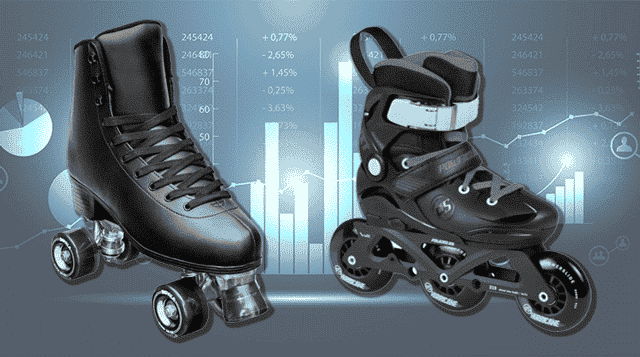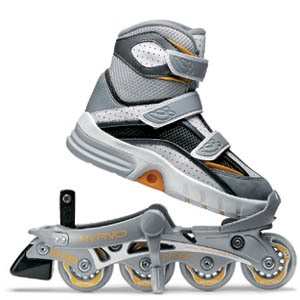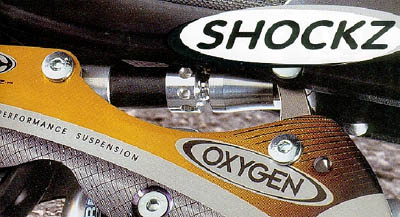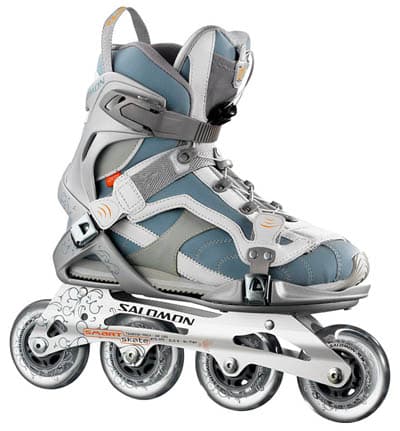15 years of evolution of the skate market
After the auspicious 90s, the skate market considerably diminished these last 15 years. OLS suggests some explanations…
Par alfathor

From Golden Age to Age of Reason
The 90s were a golden age for skating in France and all around the world, particularly from the famous strikes of 1995 that paralyzed the country for several weeks. The number of pairs sold during this period was close to 2 millions of units, against only a few dozens of thousands at the beginning of the decade.
Between 1990 and 2000, several magazines are specialized into skating (Roller Saga, RollerMag, Crazy Roller, etc.) Big brands invest in communications and there are sponsors in that young and dynamic world. Lots of you must remember the Wanadaoo Roller, Tatoo Roller, France Télécom’s support on big events, Salomon organizing freeskating competitions on the Trocadéro (Paris) in order to promote its new products… How can the decline of the market be explained?
The concentration of the skate market
 All the great manufacturers of sports equipment have been interested in skating at one point or another. Let’s remember Nike that bought out Bauer in 1997 and then sold it in 2008. Adidas also possessed Salomon until 2005. We could have made good deals on equipment if a few of them had extended their actions in the world of skating!
All the great manufacturers of sports equipment have been interested in skating at one point or another. Let’s remember Nike that bought out Bauer in 1997 and then sold it in 2008. Adidas also possessed Salomon until 2005. We could have made good deals on equipment if a few of them had extended their actions in the world of skating!
But the law of market is merciless and the number of companies has considerably reduced. There were around fifty great skate brands in the world in the middle of the 90s, and there is only a dozen big ones left.
The elders will remember with nostalgia brands such as Oxygen, Spin, Hypno (in sleep mode), Tecnica, Rossignol, Salomon, Féline, Ultra Wheels, Mojo, Rollerderby (yes indeed), Risport… That dates us a bit!
Today, the key-brands are mainly Fila, Rollerblade, Roces, K2 and Powerslide. Let’s not forget the particular case of specialized superstores like Décathlon, which take up a big share on downmarket products thanks to a distribution network of more than 250 stores in France.
The concentration of the market is inevitable: when too many actors are on the same market, especially when the latter is too small or running out of steam, a natural selection catches up and only the strong survive.
In the case of skating, a few exceptions put the rule to the test. It is not always the most financially stable brands that have stayed alive. Let’s take Salomon for example: the brand was sold to Amer Sports Corporations by Adidas in 2005. One of the first decisions made by Amer Sports was to stop the skate part to concentrate on more profitable activities… to the great displeasure of lots of skaters and specialized shops! And yet, it seems that skating was still in the green at that time in this French company, but it was not profitable enough.
The molds of skates and brands like Xsjado have been sold to other brands. Xsjado entered the Conference (Powerslide) and the molds of aggressive skates seem to have landed at Décathon’s and Roces’s.
Lots of other brands died, others were taken over. We saw Tecnica enter the heart of Rollerblade for example. At the time when Rossignol stopped producing skates, the French brand belonged to Quicksilver, which sold it in 2008 for next to nothing…
A strong historical presence of ski brands
If you look closely, lots of skate brands historically come from the ski market: Salomon, Rossignol, K2, Rollerblade (Nordica group). The reason is simple: the technological skills to produce skis or skates are quite similar. Moreover, it is in the best interest of those societies, which make their sales during the winter season, to diversify and occupy the summer season too. Skating naturally seemed to be an interesting opportunity for these brands at a given moment.
Today, the skate market dropped down and lots of manufacturers openly confess that skating has become the fifth wheel, as its sales only represent a small part compared to the gold mine of winter sports products.
The investments decrease
 One cannot help but think that the fact that skating is only a tiny part of big groups slows down the development research and communications. These jobs have suffered from the decrease of investments of the big brands. Intrinsic and extrinsic causes can be highlighted.
One cannot help but think that the fact that skating is only a tiny part of big groups slows down the development research and communications. These jobs have suffered from the decrease of investments of the big brands. Intrinsic and extrinsic causes can be highlighted.
The skate market developed under the impulse of big firms, already mentioned above, like Rollerblade, K2, Roces, Salomon… These brands and others have invested a lot into research, development and communications.
At a time when the market was still in progress, a relatively important part of the budget was reinvested and compensated by the increase of the sales. At that time, the specialized superstores widely offered the products of big skate brands on their shelves: You could even find a few upmarket models!
Once the market became mature and started to stagnate, the big brands had to slow down their investments, communications and sponsorships. They also had to deal with a new competition coming from specialized superstores, which developed their own products. The latters offered a down-market alternative, depriving the traditional big brands from their main target. Their strength lies in their distribution network which covers the whole territory. Deprived from their main clients, the skate brands found themselves with pistols to their heads.
At that time, they progressively relocated their productions towards Eastern and Asian countries. By the way, the market temporarily developed on the spot, which limited damage.
However, the sales in Europe dropped down by the end of the 2000s. Lots of shops closed at that time. Imagine: there was a dozen specialized shops in Paris!
Another cause, more insidious, probably comes from the fact that the structures themselves of the groups owning skate brands encourage them to favor more profitable or bigger markets than that of skating.
Let’s take a look at three concrete examples:
- K2 is a great outdoor brand, very active in winter sports.
- Rollerblade, after having been sold by Benetton, was sold to Nordica, which is also strongly established in the mountain world.
- The skate part at Fila’s is negligible compared to the general sales of the other activities of the brand.
All of these brands were very active at their beginning and applied for lots of patents. Today, they seem to draw on their knowledge and let a free hand to rising brands like Powerslide…
A few brands that get out while the going is good
 Powerslide is a German company that only distributes products dedicated to urban sports. Today, innovation, research and development are only carried by new firms that focus on urban sports. After arriving on the skate market with down-market products a dozen years ago, Powerslide progressively diversified its activities, widened its ranges and improved the quality of its products. Today, Powerslide distributes all the aggressive skating brands of the Conference, ensuring a wide range of renowned brands. All segments are covered from mid-range to upmarket models. All practices are covered too: freeskating, speed skating, slalom, hockey… and even all-terrain skating!
Powerslide is a German company that only distributes products dedicated to urban sports. Today, innovation, research and development are only carried by new firms that focus on urban sports. After arriving on the skate market with down-market products a dozen years ago, Powerslide progressively diversified its activities, widened its ranges and improved the quality of its products. Today, Powerslide distributes all the aggressive skating brands of the Conference, ensuring a wide range of renowned brands. All segments are covered from mid-range to upmarket models. All practices are covered too: freeskating, speed skating, slalom, hockey… and even all-terrain skating!
In 2012, Powerslide launches the Virus range and proves that innovating is still possible in the world of skating.
In the same logic, let’s highlight the significant increase of Seba. The French company has widened its offer, starting by slalom skating, and then extending to freeskating, fitness and kids skates. Today, Seba supports the World Slalom Series and works on the development of Skate Cross with the World Skate Cross Series. In short, Sébastien Laffargue’s brand is active and is willing to develop its market.
On a different scale, EO Skates has been working for 10 years on the design of its speed skating carbon frames. There is no doubt that in a couple of years, they will take an important market share.
One trend replacing another
One cannot talk about the relative “decline” of skating without talking about the competition with other practices. The scooters’ arrival is symbolic enough. Scooters conquered market shares, particularly with the youngsters. Kids are the purchasers but parents have to supervise the money spending.
If scooters saved lots of specialized shops that sensed a change in the wind, skates have found themselves in front of serious competitors for 10 years now. Scooters are sold by pallets in specialized superstores at the end of the 2000s… At the exact same time when skating decrease.
Today, there are scooters the price of which is around €300, which shows that this market will become mature too in several months. But then, what will be the next product in the headlines? Roller-derby will remain a niche practice. Which practice will boost back the skate market? To be continued…
Useful links
– Skating, golf and rugby sevens in the anteroom of the Olympics games
– Adidas’s Salomon bought by AMER Sports Corporation
– Nike sells Bauer
– Quicksilver sells Rossignol at a knocked-down price
– Rossignol: Quicksilver closes the deal
– Skating and other urban sports markets professionalize
–
Translated by Close Yr E’s
Photos: all rights reserved

Paul
4 août 2012 at 11 h 40 min